The UK rail industry was privatised by the Conservative government in the mid-1990s. As Case Study 14.8 on the Economics 10th edition website states:
 The management of rail infrastructure, such as track, signalling and stations, was to be separated from the responsibility for running trains. There would be 25 passenger train operating companies (TOCs), each having a franchise lasting between seven and fifteen years. These companies would have few assets, being forced to rent track and lease stations from the infrastructure owner (Railtrack), and to lease trains and rolling stock from three new rolling-stock companies. …In practice, the 25 franchises were operated by just 11 companies (with one, National Express, having nine of the franchises).
The management of rail infrastructure, such as track, signalling and stations, was to be separated from the responsibility for running trains. There would be 25 passenger train operating companies (TOCs), each having a franchise lasting between seven and fifteen years. These companies would have few assets, being forced to rent track and lease stations from the infrastructure owner (Railtrack), and to lease trains and rolling stock from three new rolling-stock companies. …In practice, the 25 franchises were operated by just 11 companies (with one, National Express, having nine of the franchises).
In 1996, at the start of the franchise era, the train operating companies were largely private-sector companies such as National Express, Stagecoach, Virgin Rail and Prism Rail. By 2020, most of the franchises were operated by a foreign state-owned business or a joint venture with a foreign state-owned firm.
As a result of poor performance (see above case study), Railtrack was effectively renationalised in 2002 as Network Rail – a not-for-profit company, wholly dependent upon the UK Treasury for any shortfall in its funds.
TOCs had mixed success. Some performed so poorly that their franchise contracts had to be temporarily taken over by a state-owned operator. For example, in June 2003 the Strategic Rail Authority withdrew the operating licence of the French company Connex South Eastern. The franchise was temporarily taken over by the publicly-owned South Eastern Trains from November 2003 until March 2006 before being returned to a private operator.
Perhaps the most troubled franchise has been the East Coast Main Line between London and Scotland. It was renationalised in 2009, reprivatised in 2015 and renationalised in 2018.
The effect of the coronavirus pandemic
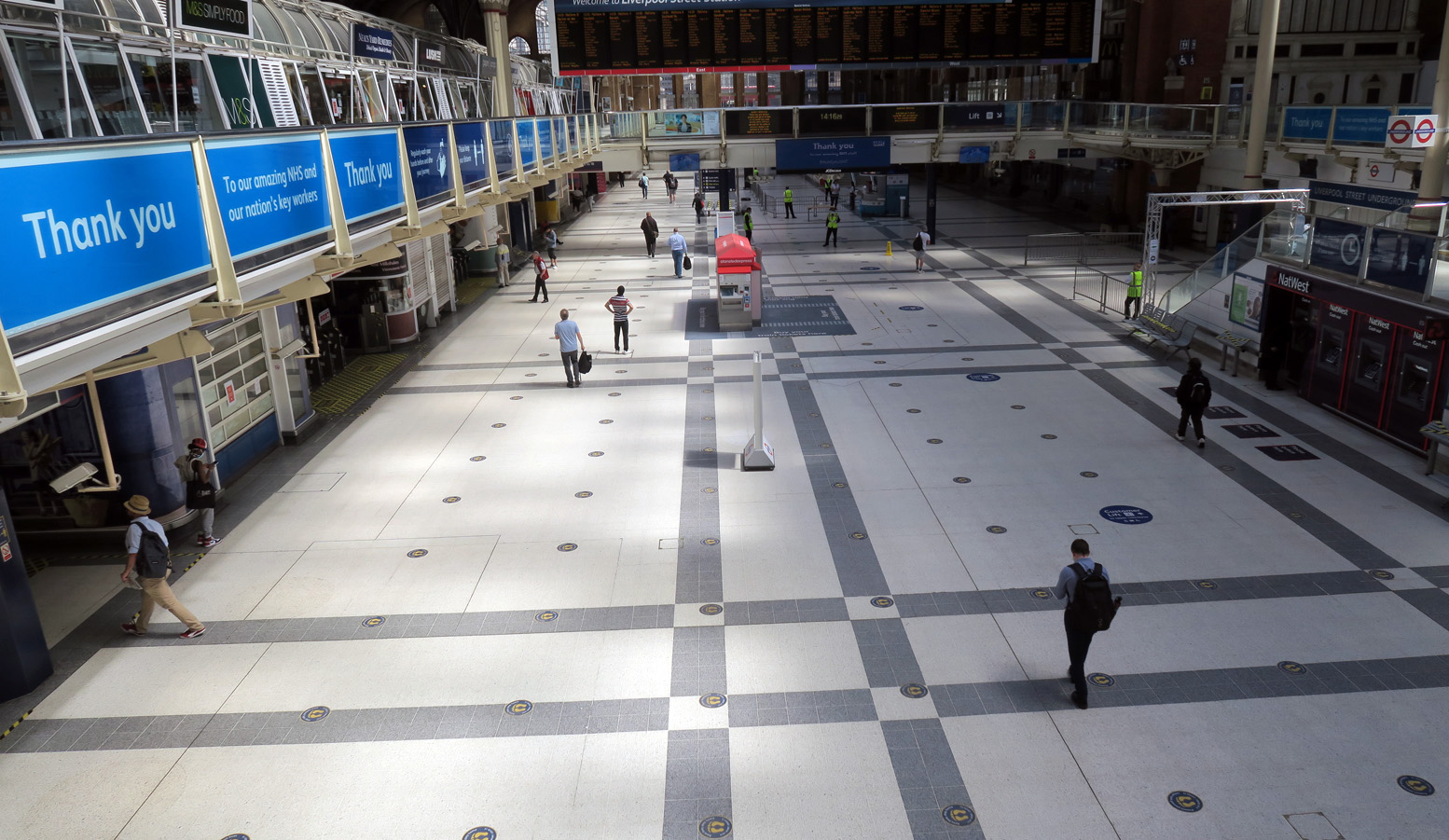 The spread of the coronavirus and the accompanying lockdowns and social distancing saw a plummeting of rail travel. Passenger numbers fell to just 10% of pre-pandemic levels. In March 2020, the UK Government introduced Emergency Measures Agreements (EMAs), which temporarily replaced rail franchise agreements. TOCs were paid a 2% fee (based on pre-Covid costs) to run trains and losses were borne by the government.
The spread of the coronavirus and the accompanying lockdowns and social distancing saw a plummeting of rail travel. Passenger numbers fell to just 10% of pre-pandemic levels. In March 2020, the UK Government introduced Emergency Measures Agreements (EMAs), which temporarily replaced rail franchise agreements. TOCs were paid a 2% fee (based on pre-Covid costs) to run trains and losses were borne by the government.
When the EMAs ran out on the 20 September, they were replaced by Emergency Recovery Measures Agreements (ERMAs), set to last until no later than April 2022. Under these measures, the fees paid to TOCs were reduced to a maximum of 1.5%. These consist partly of a fixed fee (again based on pre-Covid costs) and partly on a performance payment, depending on punctuality, passenger satisfaction and financial performance. As with the EMAs, the new arrangements involve virtually no risk for the TOCs (except for the size of the performance-related fee). Costs and revenue will be passed to the Department for Transport, which will bear any losses.
TOCs were required to run a virtually full service to allow reduced passenger numbers to observe social distancing. Despite journeys still being only 30% of pre-pandemic levels, social distancing on trains meant that many trains were sold out.
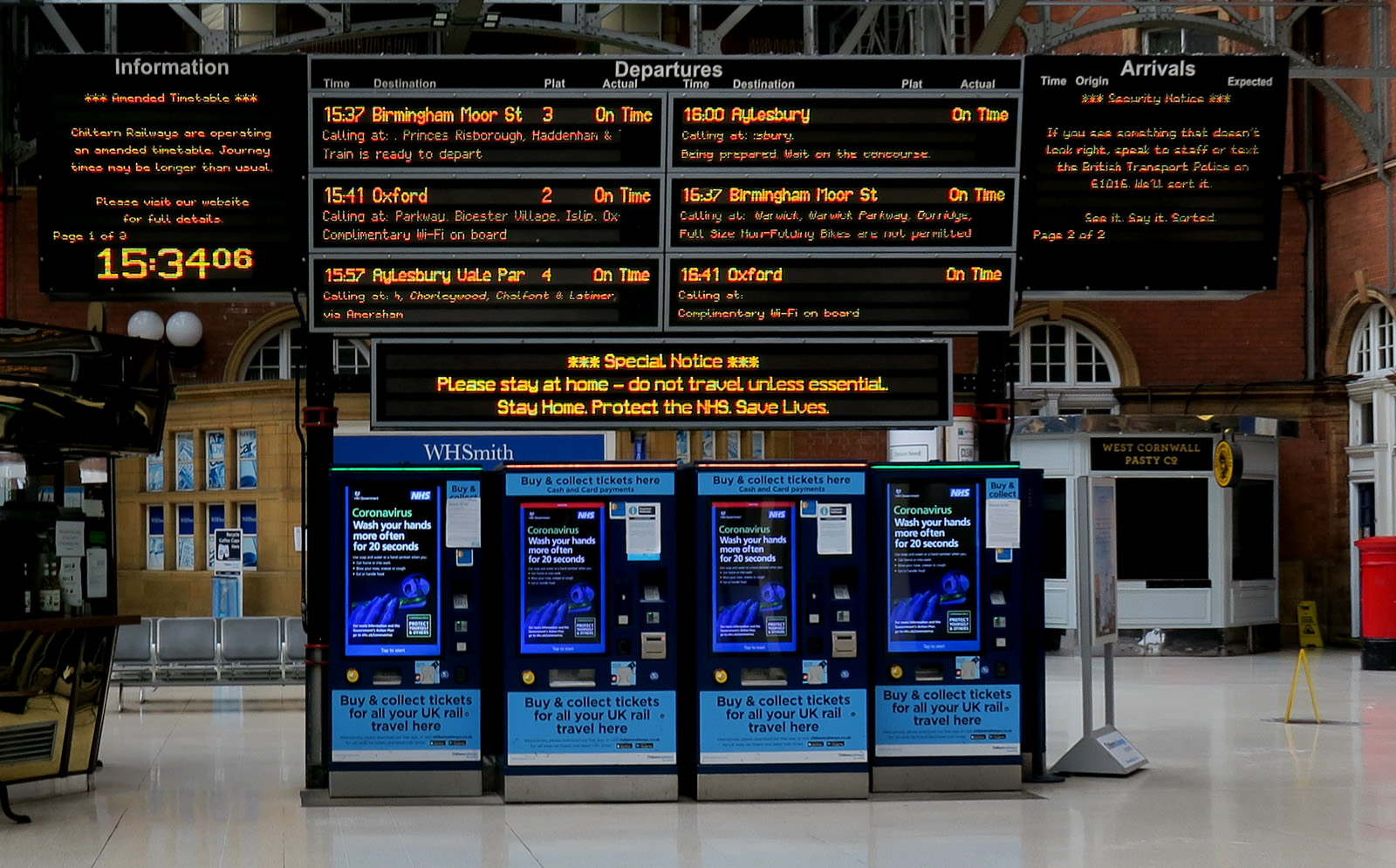 The ERMAs also contain provisions for the replacement of franchises when they come to an end. The precise nature of these will be spelt out in a White Paper, which will respond to the recommendations of the Williams Review of the railways. This review was set up in 2018 in the aftermath of difficulties with various franchises and a chaotic nationwide timetable change. The review’s findings were originally scheduled to be published in Autumn 2019, but were then put back because of the general election and the disruptions caused by the pandemic. The government hopes that it will be published before the end of 2020.
The ERMAs also contain provisions for the replacement of franchises when they come to an end. The precise nature of these will be spelt out in a White Paper, which will respond to the recommendations of the Williams Review of the railways. This review was set up in 2018 in the aftermath of difficulties with various franchises and a chaotic nationwide timetable change. The review’s findings were originally scheduled to be published in Autumn 2019, but were then put back because of the general election and the disruptions caused by the pandemic. The government hopes that it will be published before the end of 2020.
It is expected that the review will recommend replacing the franchise system with something similar to the currents ERMAs. TOCs awarded a contract will be paid a performance-related fee and revenues will go to the government, which will bear the costs. While this is not quite renationalisation, it is not the previous franchise system where TOCs bore the risks. It is in effect a contract system where private companies are paid to deliver a public service.
The CrossCountry franchise
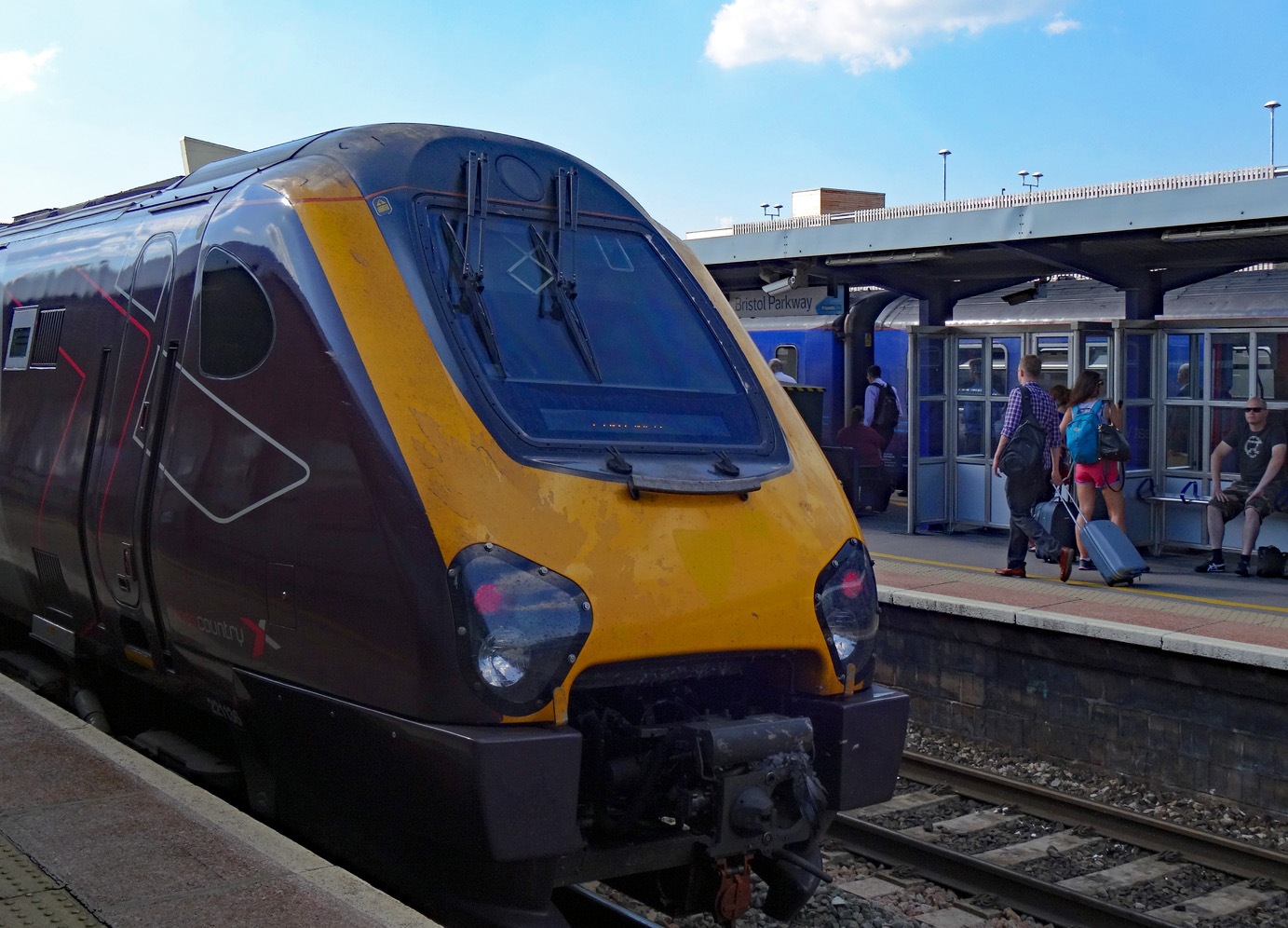 The first test of this new approach to contracting with TOCs came this month. Arriva’s franchise for running CrossCountry trains ran out and was replaced by a three-year contract to run the services, which span
The first test of this new approach to contracting with TOCs came this month. Arriva’s franchise for running CrossCountry trains ran out and was replaced by a three-year contract to run the services, which span  much of the length of Great Britain from Aberdeen to Penzance via Edinburgh, Glasgow, Newcastle, Sheffield, Birmingham, Bristol and Plymouth; from Bournemouth to Manchester via Reading, Oxford, Wolverhampton and Stoke; from Cardiff to Nottingham via Gloucester, Birmingham and Derby; and from Birmingham to Stanstead Airport via Leicester and Cambridge.
much of the length of Great Britain from Aberdeen to Penzance via Edinburgh, Glasgow, Newcastle, Sheffield, Birmingham, Bristol and Plymouth; from Bournemouth to Manchester via Reading, Oxford, Wolverhampton and Stoke; from Cardiff to Nottingham via Gloucester, Birmingham and Derby; and from Birmingham to Stanstead Airport via Leicester and Cambridge.
The contract will last three years. The Department for Transport will gain the revenues and cover the costs and pay Arriva (owned by Deutsche Bahn) a management fee that is ‘performance related’ – as yet unspecified. This, like the EMAs and then the ERMAs, will remove the risks from Arriva.
Nationalisation in Wales
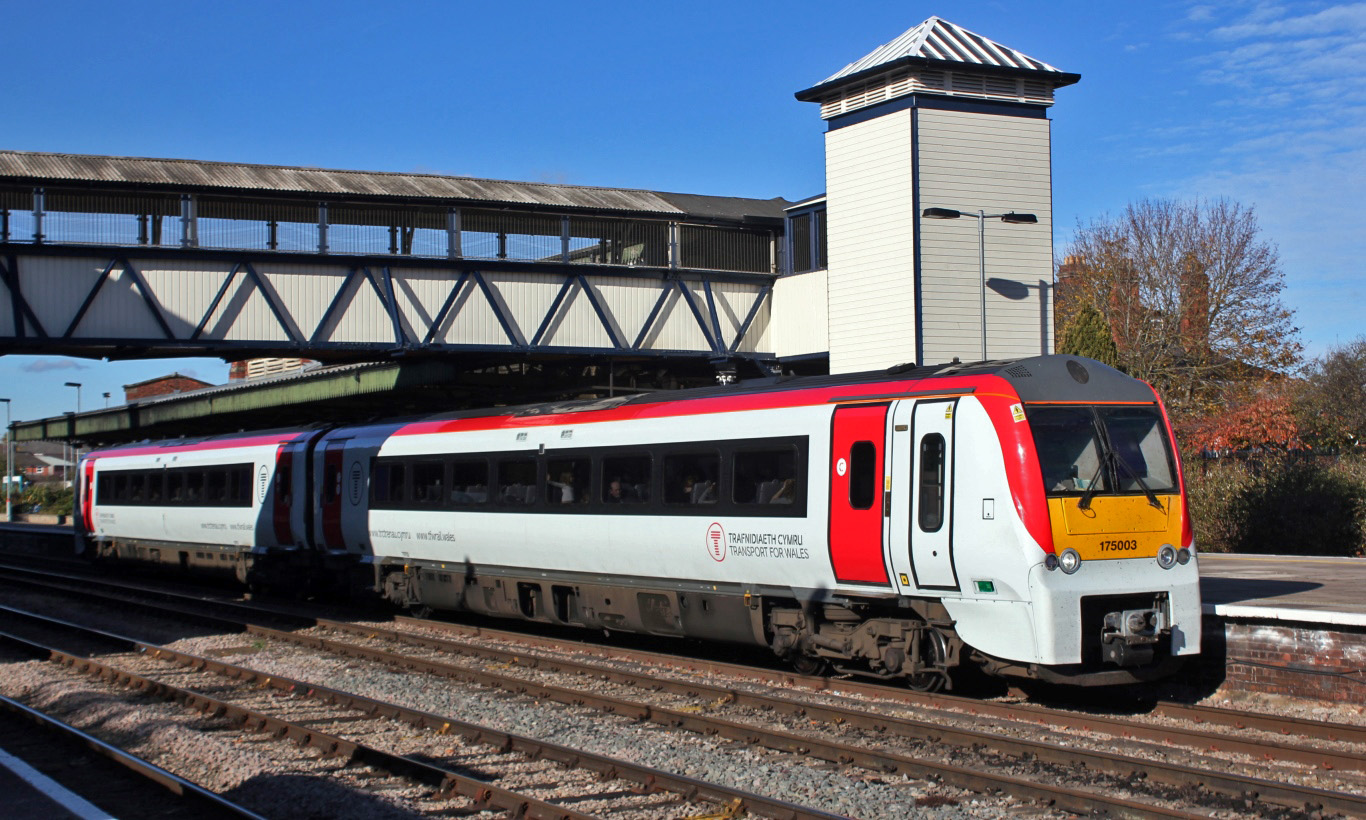 The Welsh government has announced that Transport for Wales will be taken over by a publicly owned company in February 2021. TfW operates many of the routes in Wales and the borders and most of the branch lines in Wales, including the valley commuter lines into Cardiff. It is currently owned by KeolisAmey (a joint company owned 70% by the French company, Keolis (part of SNCF), and 30% by the UK company, Amey), which took over the franchise in 2018 from Arriva. The Welsh government considered that KeolisAmey would collapse if it did not provide support. Ministers decided that nationalisation would give it greater control than simply subsidising KeolisAmey.
The Welsh government has announced that Transport for Wales will be taken over by a publicly owned company in February 2021. TfW operates many of the routes in Wales and the borders and most of the branch lines in Wales, including the valley commuter lines into Cardiff. It is currently owned by KeolisAmey (a joint company owned 70% by the French company, Keolis (part of SNCF), and 30% by the UK company, Amey), which took over the franchise in 2018 from Arriva. The Welsh government considered that KeolisAmey would collapse if it did not provide support. Ministers decided that nationalisation would give it greater control than simply subsidising KeolisAmey.
James Price, chief executive of the Welsh Government, stated that this allows it:
to reduce the profit we pay to the private sector massively over time, and make sure that when the revenue comes back, it comes back in to the taxpayer.
Under emergency measures, KeolisAmey has already been supported by the Welsh government to the tune of £105 million (£40 million in March and £65 million in June) to continue operating the franchise. Passenger numbers fell by 95% as the pandemic hit.
Is nationalisation a better way forward, or should private train operating companies continue with the government taking on the risks, or should the franchise system be amended with greater support from the government but with the TOCs still bearing risk? The articles below consider these issues.
Articles
- Rail nationalisations may be coming down the track
BBC News, Tom Burridge (17/9/20)
- ONS recognises full nationalisation of the UK railways
Financial Times, Tanya Powley (31/7/20)
- Train services are very efficient for shareholders – less so for customers
The Conversation, Daniel Fisher (22/8/19)
- UK government on standby to nationalise more rail lines
Financial Times, Jim Pickard and Philip Georgiadis (17/9/20)
- British Government Ends Rail Franchising
Railway-News, Josephine Cordero Sapién (21/9/20)
- British government announces end for rail franchise system
Trains, Keith Fender (12/10/20)
- Monday essay: A new era?
Railnews, Sim Harris (19/10/20)
- Arriva secures three-year CrossCountry contract
International railway Journal Kevin Smith (16/10/20)
- New contract signed for Arriva CrossCountry
RTM, Ailsa Cowen (16/10/20)
- Franchising is Dead
Railway-News, Josephine Cordero Sapién and Gareth Davies (16/9/20)
- Transport for Wales rail services to be nationalised
BBC News (23/10/20)
- Transport for Wales to be nationalised
Railnews (22/10/20)
- Why has the Welsh Government nationalised rail’s Wales and Borders franchise?
BusinessLive, Sion Barry (22/10/20)
Questions
- Explain how the franchising system worked (prior to March 2020).
- To what extent could each franchise be described as a ‘contestable monopoly’?
- What incentives were built into the franchising system to deliver improvements in service for passengers?
- What were the weaknesses of the franchising system?
- In the context of post-pandemic rail services, compare the relative merits of nationalisation with those of awarding contracts where the government receives the revenues and bears the costs and pays train operating companies a fee for operating the services where the size of the fee is performance related.
- What are the arguments for subsidising rail transport? What should determine the size of the subsidy?
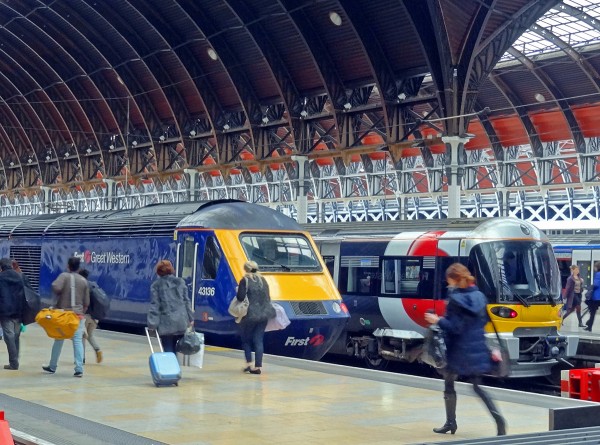 The linked articles below look at the state of the railways in Britain and whether renationalisation would be the best way of securing more investment, better services and lower fares.
The linked articles below look at the state of the railways in Britain and whether renationalisation would be the best way of securing more investment, better services and lower fares.
Rail travel and rail freight involve significant positive externalities, as people and goods transported by rail reduce road congestion, accidents and traffic pollution. In a purely private rail system with no government support, these externalities would not be taken into account and there would be a socially sub-optimal use of the railways. If all government support for the railways were withdrawn, this would almost certainly result in rail closures, as was the case in the 1960s, following the publication of the Beeching Report in 1963.
Also the returns on rail investment are generally long term. Such investment may not, therefore, be attractive to private rail operators seeking shorter-term returns.
These are strong arguments for government intervention to support the railways. But there is considerable disagreement over the best means of doing so.
One option is full nationalisation. This would include both the infrastructure (track, signalling, stations, bridges, tunnels and marshalling yards) and the trains (the trains themselves – both passenger and freight – and their operation).
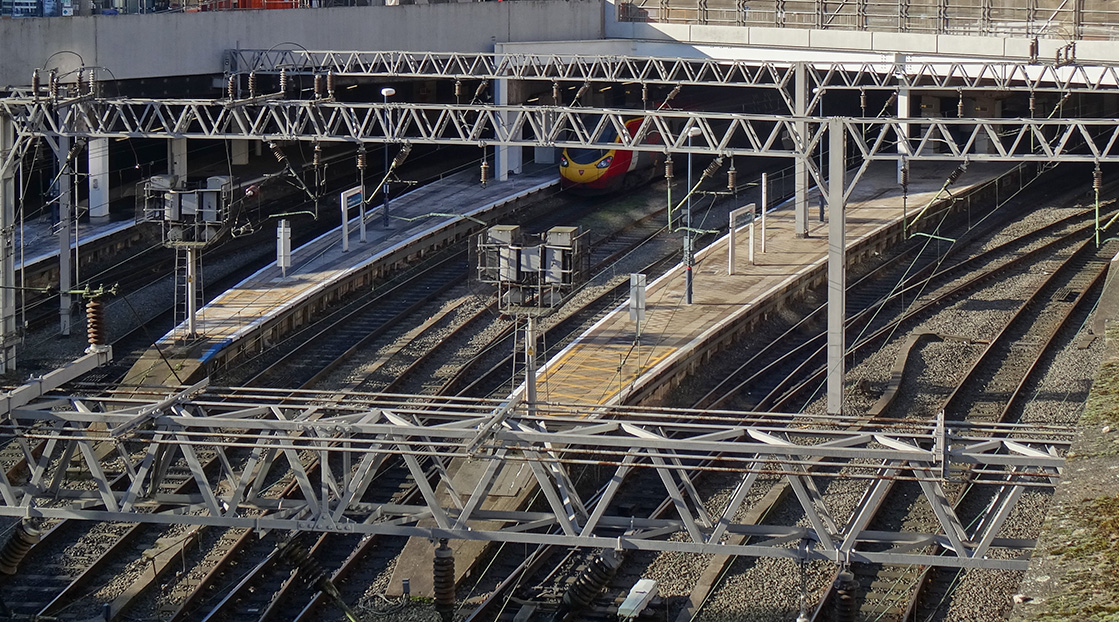
At present, the infrastructure (except for most stations) is owned, operated, developed and maintained by Network Rail, which is a non-departmental public company (NDPB) or ‘Quango’ (Quasi-autonomous non-governmental organisation, such as NHS trusts, the Forestry Commission or the Office for Students. It has no shareholders and reinvests its profits in the rail infrastructure. Like other NDPBs, it has an arm’s-length relationship with the government. Network Rail is answerable to the government via the Department for Transport. This part of the system, therefore, is nationalised – if the term ‘nationalised organisations’ includes NDPBs and not just full public corporations such as the BBC, the Bank of England and Post Office Ltd.
Train operating companies, however, except in Northern Ireland, are privately owned under a franchise system, with each franchise covering specific routes. Each of the 17 passenger franchises is awarded under a competitive tendering system for a specific period of time, typically seven years, but with some for longer. Some companies operate more than one franchise.
Companies awarded a profitable franchise are required to pay the government for operating it. Companies awarded a loss-making franchise are given subsidies by the government to operate it. In awarding franchises, the government looks at the level of payments the bidders are offering or the subsidies they are requiring.
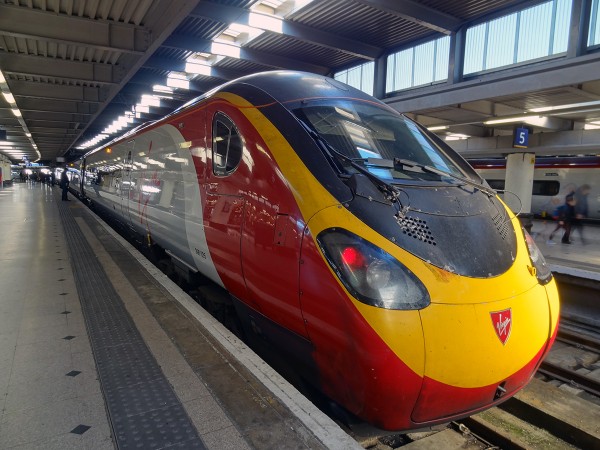 But this system has come in for increasing criticism, with rising real fares, overcrowding on many trains and poor service quality. The Labour Party is committed to taking franchises into public ownership as they come up for renewal. Indeed, there is considerable public support for nationalising the train operating companies.
But this system has come in for increasing criticism, with rising real fares, overcrowding on many trains and poor service quality. The Labour Party is committed to taking franchises into public ownership as they come up for renewal. Indeed, there is considerable public support for nationalising the train operating companies.
The main issue is which system would best address the issues of externalities, efficiency, quality of service, fares and investment. Ultimately it depends on the will of the government. Under either system the government plays a major part in determining the level of financial support, operating criteria and the level of investment. For this reason, many argue that the system of ownership is less important than the level and type of support given by the government and how it requires the railways to be run.
Articles
The case for re-nationalising Britain’s railways The Conversation, Nicole Badstuber (27/8/15)
Lessons from the Beeching cuts in reviving Britain’s railwa The Conversataion, Andrew Edwards (7/12/17)
Britain’s railways were nationalised 70 years ago – let’s not do it again The Conversation, Jonathan Cowie (1/1/18)
FactCheck Q&A: Should we nationalise the railways? Channel 4 News, Martin Williiams (18/5/17)
Britain’s railways need careful expansion, not nationalisation Financial Times, Julian Glover (5/1/18)
Right or wrong, Labour is offering a solution to the legitimacy crisis of our privatised railways Independent. Ben Chu (2/1/18)
Whether or not nationalisation is the answer, there are serious questions about the health of Britain’s railways Independent. Editorial (2/1/18)
Why Nationalising The Railways Is The Biggest Misdirect In Politics Huffington Post, Chris Whiting (5/1/18)
Questions
- What categories of market failure would exist in a purely private rail system with no government intervention?
- What types of savings could be made by nationalising train operating companies?
- The franchise system is one of contestable monopolies. In what ways are they contestable and what benefits does the system bring? Are there any costs from the contestable nature of the system?
- Is it feasible to have franchises that allow more than one train operator to run on most routes, thereby providing some degree of continuing competition?
- How are rail fares determined in Britain?
- Would nationalising the train operating companies be costly to the taxpayer? Explain.
- What determines the optimal length of a franchise under the current system?
- What role does leasing play in investment in rolling stock?
- What are the arguments for and against the government’s decision in November 2017 to allow the Virgin/Stagecoach partnership to pull out of the East Coast franchise three years early because it found the agreed payments to the government too onerous?
- Could the current system be amended in any way to meet the criticisms that it does not adequately take into account the positive externalities of rail transport and the need for substantial investment, while also encouraging excessive risk taking by bidding companies at the tendering stage?
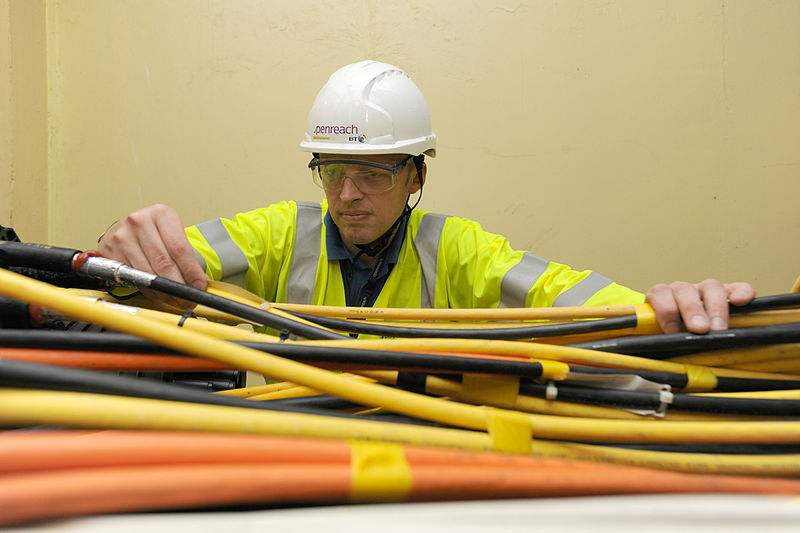 Concerns have been expressed about the UK’s relatively poor record of upgrading broadband services so that households can receive ultrafast connectivity. Some commenters have argued that future economic growth prospects will be harmed if the UK continues to lag behind its leading rivals.
Concerns have been expressed about the UK’s relatively poor record of upgrading broadband services so that households can receive ultrafast connectivity. Some commenters have argued that future economic growth prospects will be harmed if the UK continues to lag behind its leading rivals.
Much of the fixed line system that allows people to connect to broadband was originally installed many years ago for the land-line telephone network. The so called ‘final mile’ consists of copper-based wiring that is carried from street cabinets to the premises of the end-user. This wiring is transported via a huge network of telegraph poles and cable ducts (small underground tunnels).
In order for people to gain connectivity to ultrafast broadband this copper based wiring needs to be replaced by fibre optic cables. This is commonly referred to as Fibre to the Premises (FTTP). Unfortunately, the UK has a relatively poor record of installing FTTP. Japan and Korea were forecast to have 70% and 63% coverage by the end of 2015 as opposed to just 2% in the UK.
Why is the UK’s record so poor? Many observers blame it on the structure of the industry. In other network industries, such as those for gas pipeline and electricity grids, the business responsible for managing the infrastructure, National Grid, is a regulated monopoly. This company does not directly supply services to consumers using the network it is responsible for maintaining. Instead, customers are supplied by the retail sector of the industry, where firms compete for their business. This sector includes the so-called ‘big six’ (British Gas; npower; SSE; Scottish Power; EDF; E.On) and a number of smaller suppliers such as Ovo Energy and Ebico.
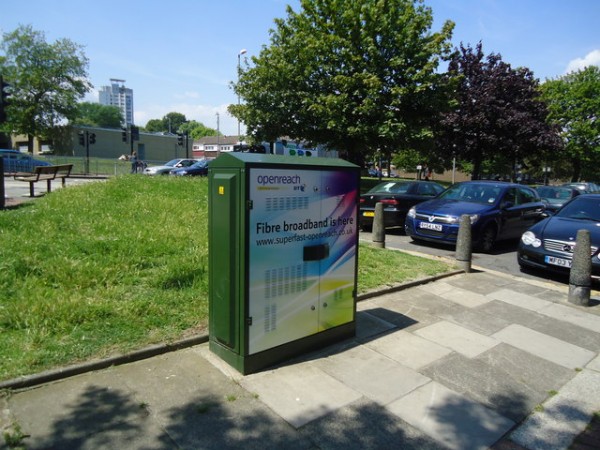
The structure of the fixed line telecommunications sector is very different. The company that manages the ‘final mile’, Openreach, is a subsidiary of BT. BT also competes with other Internet Service Providers (ISPs), such as TalkTalk and Sky, to supply broadband to customers using this network. Its market share of 32 per cent makes it the largest player in the broadband market. Sky and TalkTalk have market shares of 22 per cent and 14 per cent respectively. Virgin Media also supplies 20 per cent of this market using its own network of ducts and cables.
Given that in most cases ISPs such as Sky and TalkTalk are stuck with the network Openreach provides, BT may have limited incentives to invest. It can still earn a good return from its infrastructure of copper-based wiring and avoid installing expensive FTTP. Dido Harding, the chief executive of TalkTalk, argued that:
“We need to separate Openreach from the rest of BT to create a more competitive, pro-investment market”
Ofcom, in its recent review of the market, has taken a different approach. Rather than creating an entirely separate monopoly business to manage the network (i.e. splitting Openreach from BT), the regulator instead opted for a policy of encouraging competition between different suppliers that deploy fibre optic cables. It states in the report that:
“We believe competition between different networks is the best way to drive investment in high-quality, innovative services for customers.”
This competition could come from ISPs such as TalkTalk and Sky or other smaller network providers such as CityFibre and Gigaclear.
One major problem with this approach is that potential new entrants might be deterred from entering the market because of the very high initial costs involved in building a new network in order to deploy FTTP. In particular, the costs of digging up the roads and laying the ducts are considerable. Matt Yardley, author of a study on the industry, said:
“It is widely accepted that civil works such as digging trenches account for up to 80% of broadband deployment costs.”
One way of reducing these costs and encouraging more competition is to allow rival firms access to the existing ducts and poles that are currently managed by Openreach. Once access has been obtained, these firms could effectively rent space inside the ducts and lay fibre optic cables alongside the existing copper-based wiring. Vodafone reported that a similar policy in Spain had reduced its capital expenditure of building FTTP by 40 per cent compared with constructing its own network of ducts and poles.
Ofcom first introduced this type of policy in 2010 when it launched its Physical Infrastructure Access (PIA) initiative. Unfortunately it has proved to be relatively unsuccessful with very little demand for PIA from rival firms. The success of this type of policy will depend on a number of factors including (1) the prices charged by Openreach to access and rent space inside the ducts; (2) the simplicity of any relevant administration; and (3) the availability and reliability of information about the ducts. With this last point, key issues include:
|
|
| • |
Where they are located . |
| • |
How much space is available: i.e. is there enough space for firms to lay fibre optic cables alongside the existing wiring? |
| • |
What condition they are in: i.e. are they flooded or clogged up with sand and mud, which will involve expensive work to make them usable again?
|
Firms did complain about the pricing structures and bureaucratic nature of the administration process under the PIA scheme. However, their most significant concerns were about the uncertainty that was created by the lack of information about the ducts and poles. For example, analysts from the consultancy firm, Reburn, argued that if a firm contacted Openreach to try to obtain access to the network it was informed that:
“We don’t know what condition the ducts and poles are in. Please pay £10 000 for a survey. Also unfortunately we are rather busy and we can only start in six weeks.”
Matthew Hare, the chief executive of Gigaclear, argued that it was like going to a shop where the assistant says:
“Give me some money, and I’ll tell you whether you can have it or not.”
In response to these criticisms Ofcom has introduced a number of changes to PIA, which has been re-named Duct and Pole Access (DPA). In particular, it has imposed a new requirement on Openreach to create a database that provides information on the location, condition and capacity of its ducts and poles. The database must be made available to rival ISPs and network providers. DPA must also be provided on the same timescales, terms and conditions to all businesses including other parts of BT – this is referred to as ‘equivalence of inputs’.
The first big test of this policy is in Southend where City Fibre is hoping to deploy 50km of fibre optic cables using DPA. However, reports in the media have suggested that the initial surveys have found very limited capacity in some of the ducts, which would make DPA impossible.
It will be interesting to see how the trial in Southend progresses. If it is successful, then DPA may be viable for about 40 per cent of premises in the UK. If it fails, then Ofcom might ultimately have to force Openreach to be completely separated from BT.
Articles
How the gothic city of York became a broadband battleground The Telegraph, Kate Palmer (22/5/16)
City Fibre first to mount BT challenge after Openreach is told to share network The Telegraph, Kate Palmer (1/3/16)
Challenges as CityFibre Moot Using BT Cable Ducts in Southend-on-Sea ISPreview, Mark Jackson (2/5/16)
CityFibre to build pure fibre infrastructure for Southend Networking (5/4/16)
Ofcom tells BT to open up infrastructure to rivals The Guardian, Rob Davies (26/2/16)
Questions
- Draw an average total cost curve to illustrate the economics of building a network of ducts and poles. Label the minimum efficient scale.
- To what extent does DPA create a contestable market?
- For DPA to deliver productive efficiency, what must be true about the economies of scale of laying fibre optic cables?
- In the run-up to Ofcom’s review of the telecoms industry, many commentators described Openreach as being a natural monopoly. To what extent do you agree with this argument?
- What are the advantages of marginal cost pricing? What issues might a regulator face if it tried to impose marginal cost pricing on a natural monopoly?
- Using a diagram, explain how the network of ducts and poles might be a natural monopoly in rural areas but not in densely populated urban areas.
- Discuss how Ofcom has tried to increase the level of separation between Openreach and BT.
In what is being heralded as a historic deal, the EU has reached agreement with the USA on what is termed an ‘open skies’ deal. This will allow EU-based airlines to fly from anywhere in Europe to anywhere in the USA and US carriers can operate to any European destination. So what will this deal mean for travellers, the environment and the airlines. The articles below look at the issues and also at the detail of the agreement, which still maintains many of the previous limitations on airlines and their ownership.
EU backing for ‘open skies’ deal BBC News Online (22/3/07)
Q&A: Open skies BBC News Online (22/3/07)
EU agrees open skies deal Guardian (22/3/07)
Open skies: Q&A Guardian (22/3/07)
Transatlantic fares set to tumble after ‘open skies’ deal Times Online(22/3/07)
Questions
| 1. |
What criteria should be used to assess the success of the ‘open skies’ deal? |
| 2. |
Assess the extent to which the ‘open skies’ deal will increase the level of competition in the transatlantic market for air travel. |
| 3. |
Discuss the options available to the EU to increase competition further in the market for air travel. |
The management of rail infrastructure, such as track, signalling and stations, was to be separated from the responsibility for running trains. There would be 25 passenger train operating companies (TOCs), each having a franchise lasting between seven and fifteen years. These companies would have few assets, being forced to rent track and lease stations from the infrastructure owner (Railtrack), and to lease trains and rolling stock from three new rolling-stock companies. …In practice, the 25 franchises were operated by just 11 companies (with one, National Express, having nine of the franchises).
 The spread of the coronavirus and the accompanying lockdowns and social distancing saw a plummeting of rail travel. Passenger numbers fell to just 10% of pre-pandemic levels. In March 2020, the UK Government introduced Emergency Measures Agreements (EMAs), which temporarily replaced rail franchise agreements. TOCs were paid a 2% fee (based on pre-Covid costs) to run trains and losses were borne by the government.
The spread of the coronavirus and the accompanying lockdowns and social distancing saw a plummeting of rail travel. Passenger numbers fell to just 10% of pre-pandemic levels. In March 2020, the UK Government introduced Emergency Measures Agreements (EMAs), which temporarily replaced rail franchise agreements. TOCs were paid a 2% fee (based on pre-Covid costs) to run trains and losses were borne by the government. The ERMAs also contain provisions for the replacement of franchises when they come to an end. The precise nature of these will be spelt out in a White Paper, which will respond to the recommendations of the Williams Review of the railways. This review was set up in 2018 in the aftermath of difficulties with various franchises and a chaotic nationwide timetable change. The review’s findings were originally scheduled to be published in Autumn 2019, but were then put back because of the general election and the disruptions caused by the pandemic. The government hopes that it will be published before the end of 2020.
The ERMAs also contain provisions for the replacement of franchises when they come to an end. The precise nature of these will be spelt out in a White Paper, which will respond to the recommendations of the Williams Review of the railways. This review was set up in 2018 in the aftermath of difficulties with various franchises and a chaotic nationwide timetable change. The review’s findings were originally scheduled to be published in Autumn 2019, but were then put back because of the general election and the disruptions caused by the pandemic. The government hopes that it will be published before the end of 2020. The first test of this new approach to contracting with TOCs came this month. Arriva’s franchise for running CrossCountry trains ran out and was replaced by a three-year contract to run the services, which span
The first test of this new approach to contracting with TOCs came this month. Arriva’s franchise for running CrossCountry trains ran out and was replaced by a three-year contract to run the services, which span  much of the length of Great Britain from Aberdeen to Penzance via Edinburgh, Glasgow, Newcastle, Sheffield, Birmingham, Bristol and Plymouth; from Bournemouth to Manchester via Reading, Oxford, Wolverhampton and Stoke; from Cardiff to Nottingham via Gloucester, Birmingham and Derby; and from Birmingham to Stanstead Airport via Leicester and Cambridge.
much of the length of Great Britain from Aberdeen to Penzance via Edinburgh, Glasgow, Newcastle, Sheffield, Birmingham, Bristol and Plymouth; from Bournemouth to Manchester via Reading, Oxford, Wolverhampton and Stoke; from Cardiff to Nottingham via Gloucester, Birmingham and Derby; and from Birmingham to Stanstead Airport via Leicester and Cambridge. The Welsh government has announced that Transport for Wales will be taken over by a publicly owned company in February 2021. TfW operates many of the routes in Wales and the borders and most of the branch lines in Wales, including the valley commuter lines into Cardiff. It is currently owned by KeolisAmey (a joint company owned 70% by the French company, Keolis (part of SNCF), and 30% by the UK company, Amey), which took over the franchise in 2018 from Arriva. The Welsh government considered that KeolisAmey would collapse if it did not provide support. Ministers decided that nationalisation would give it greater control than simply subsidising KeolisAmey.
The Welsh government has announced that Transport for Wales will be taken over by a publicly owned company in February 2021. TfW operates many of the routes in Wales and the borders and most of the branch lines in Wales, including the valley commuter lines into Cardiff. It is currently owned by KeolisAmey (a joint company owned 70% by the French company, Keolis (part of SNCF), and 30% by the UK company, Amey), which took over the franchise in 2018 from Arriva. The Welsh government considered that KeolisAmey would collapse if it did not provide support. Ministers decided that nationalisation would give it greater control than simply subsidising KeolisAmey.



